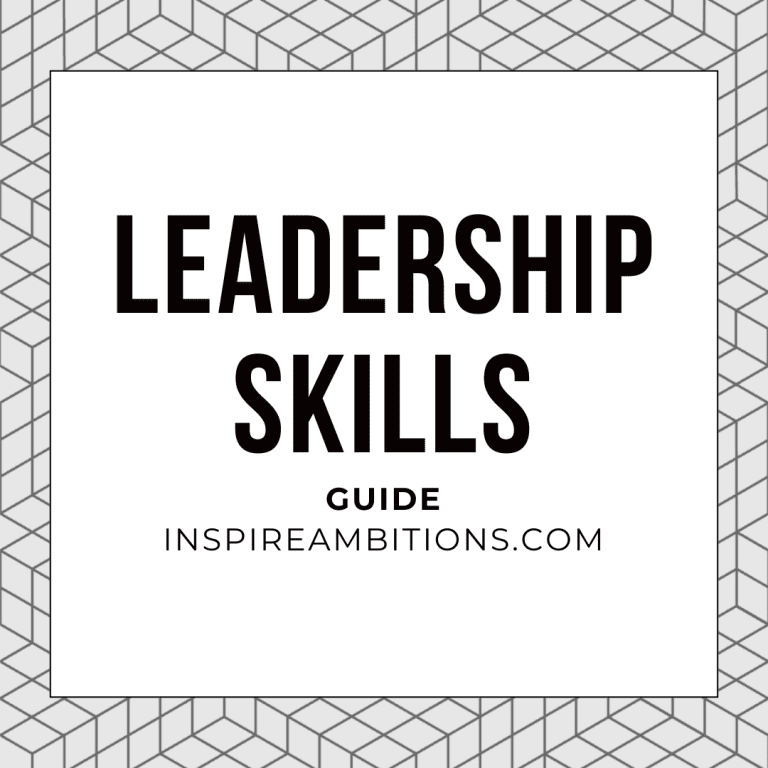Tipo de ejercicios: una guía completa
Regular exercise is essential for maintaining a healthy body and mind. However, with so many types of exercises available, it can be challenging to decide which one is right for you. In this article, different types of exercises will be discussed to help readers choose the best workout routine for their needs.
One of the most common reasons people exercise is to burn calories. But what is the process for burning calories, and how can it be achieved? This article will provide readers with a clear understanding of how calories are burned during exercise and the different types of exercises that can help achieve this goal.
Different types of bodies require different types of exercises. This article will explore the various body types and the exercises that are best suited for each. By understanding their body type, readers will be able to tailor their workout routine to achieve the best results.
Type of Exercises
There are various types of exercises that one can do to improve their overall health and fitness. Each type of exercise has its own benefits and can be tailored to meet individual needs and goals. Here are some of the most common types of exercises:
Cardiovascular Exercises
Cardiovascular exercises, also known as cardio, are exercises that increase the heart rate and improve the cardiovascular system. This type of exercise includes running, cycling, swimming, and dancing. Cardiovascular exercises can help burn calories, improve endurance, and reduce the risk of heart disease.
Strength Training Exercises
Strength training exercises involve using weights or resistance to build and strengthen muscles. This type of exercise includes weightlifting, push-ups, and squats. Strength training exercises can help increase muscle mass, improve bone density, and boost metabolism.
Flexibility Exercises
Flexibility exercises, also known as stretching, help improve flexibility and range of motion. This type of exercise includes yoga and Pilates. Flexibility exercises can help reduce the risk of injury, improve posture, and relieve stress.
High-Intensity Interval Training (HIIT)
HIIT is a type of exercise that involves short bursts of intense exercise followed by periods of rest. This type of exercise can help burn calories, improve endurance, and increase metabolism.
Low-Impact Exercises
Low-impact exercises are exercises that are easy on the joints and do not involve high-impact movements. This type of exercise includes walking, cycling, and swimming. Low-impact exercises can help improve cardiovascular health, reduce the risk of injury, and improve overall fitness.
In conclusion, incorporating a variety of exercises into your fitness routine can help improve overall health and fitness. It is important to consult with a healthcare professional before starting any new exercise program, especially if you have any underlying health conditions.
Process for Burning Calories
When it comes to burning calories, it’s important to understand the process of how it works. Calories are units of energy that are stored in the body, and they are burned when the body needs energy to function. The more calories you burn, the more weight you can lose.
One of the most effective ways to burn calories is through exercise. When you exercise, your body requires more energy, and it begins to burn calories to provide that energy. The amount of calories you burn during exercise depends on the type of exercise, the intensity, and the duration.
Cardiovascular exercises, such as running, cycling, or swimming, are great for burning calories. These exercises increase your heart rate and breathing, which increases your body’s demand for energy. The more intense the exercise, the more calories you will burn. For example, a 150-pound person can burn approximately 400 calories in an hour of running at a moderate pace.
Strength training exercises, such as weightlifting, can also help burn calories. While strength training doesn’t burn as many calories as cardiovascular exercise, it does increase muscle mass. Muscle burns more calories than fat, so the more muscle you have, the more calories you will burn at rest.
In addition to exercise, there are other ways to burn calories. Simply being active throughout the day, such as taking the stairs instead of the elevator or walking instead of driving, can help burn calories. Eating a healthy diet that is rich in fruits, vegetables, and lean protein can also help boost your metabolism and burn more calories.
In summary, the process for burning calories involves increasing your body’s demand for energy through exercise and other activities. Cardiovascular exercise and strength training are both effective for burning calories, and a healthy diet and active lifestyle can also help boost your metabolism and burn more calories.
Different Types of Bodies
Everyone’s body is unique, and there are several different body types that people can have. Understanding your body type can help you tailor your exercise and nutrition plan to achieve the best results.
The three main body types are ectomorph, mesomorph, and endomorph. Ectomorphs tend to have a thin and lean build, with a fast metabolism and difficulty gaining weight. Mesomorphs have a more muscular build, with a naturally athletic physique and the ability to gain muscle and lose fat easily. Endomorphs tend to have a stockier build, with a slower metabolism and a tendency to store fat easily.
It’s important to note that most people don’t fit neatly into one category and may have a combination of traits from different body types. For example, someone may have a mesomorph body type but also struggle with weight gain due to a slower metabolism.
Understanding your body type can help you make informed decisions about your exercise and nutrition plan. For example, ectomorphs may need to eat more calories and focus on strength training to gain muscle mass, while endomorphs may need to focus on cardiovascular exercise and a calorie-controlled diet to lose weight.
No matter what your body type is, it’s important to focus on overall health and wellness rather than trying to fit into a specific mold. With a balanced diet and regular exercise, anyone can achieve their fitness goals and improve their overall health.
Effects of Stress on the Body
Stress is a natural response to challenging situations. When a person experiences stress, their body releases hormones that prepare them to deal with the situation. However, chronic stress can have negative effects on the body.
One of the most significant effects of stress is increased cortisol levels. Cortisol is a hormone that is released in response to stress, and it can have harmful effects on the body if levels remain high for extended periods. High cortisol levels can lead to weight gain, especially around the midsection, and can also increase the risk of heart disease and diabetes.
Stress can also have a significant impact on the immune system. When a person is stressed, their immune system is suppressed, making them more susceptible to illnesses. Chronic stress can also lead to inflammation in the body, which can contribute to a variety of health problems.
Another effect of stress is on mental health. Chronic stress can lead to anxiety and depression, and can also contribute to the development of other mental health disorders.
Fortunately, there are ways to control stress and reduce its negative effects on the body. Exercise, meditation, and other relaxation techniques can help to reduce stress levels. It is also important to get enough sleep and to eat a healthy diet.
In conclusion, stress is a natural response to challenging situations, but chronic stress can have negative effects on the body. By taking steps to control stress, individuals can reduce their risk of developing health problems and improve their overall well-being.
Stress Control Methods
Stress is a common problem that affects many people. If not managed properly, it can lead to various health problems, both physical and mental. However, there are several stress control methods that can help individuals manage their stress levels effectively.
One of the most effective stress control methods is exercise. Exercise has been shown to reduce stress levels by releasing endorphins, which are natural mood enhancers. It also helps to reduce muscle tension and improve sleep quality, which are both important factors in managing stress.
Another stress control method is meditation. Meditation involves focusing on the present moment and clearing the mind of distractions. This can help individuals to reduce stress levels by promoting relaxation and reducing anxiety.
Breathing exercises are also effective stress control methods. Deep breathing exercises can help to reduce stress levels by promoting relaxation and reducing muscle tension. It can also help to improve focus and concentration, which can be helpful in managing stress.
In addition to these methods, there are several other stress control techniques that individuals can use to manage their stress levels. These include:
- Gestión del tiempo
- Setting realistic goals
- Avoiding stressful situations
- Mantener un estilo de vida saludable
- Talking to a therapist or counselor
By using these stress control methods, individuals can effectively manage their stress levels and improve their overall health and well-being.
Cardio Types
Cardiovascular exercise, commonly known as cardio, is any exercise that increases the heart rate and breathing rate. It is an essential part of any fitness routine as it improves heart health, helps to burn calories, and increases endurance. There are different types of cardio exercises that one can perform to achieve their fitness goals.
High-Intensity Interval Training (HIIT)
HIIT is a type of cardio that involves short bursts of high-intensity exercise alternated with low-intensity recovery periods. It is an effective way of burning calories and improving endurance in a shorter amount of time. HIIT can be done with any exercise, such as running, cycling, or jumping jacks.
Steady-State Cardio
Steady-state cardio involves maintaining a steady pace of moderate intensity for an extended period. This type of cardio is effective in burning calories and improving cardiovascular health. Examples of steady-state cardio include jogging, cycling, and swimming.
Low-Impact Cardio
Low-impact cardio is a type of cardio that involves exercises that put less stress on the joints. This type of cardio is ideal for individuals with joint pain or those recovering from an injury. Examples of low-impact cardio include walking, cycling, and swimming.
Circuit Training
Circuit training is a combination of cardio and strength training exercises. It involves performing a series of exercises in a circuit with minimal rest in between. Circuit training is an effective way of burning calories and improving endurance while also building strength.
Conclusión
Incorporating cardio into a fitness routine is essential for improving cardiovascular health, burning calories, and increasing endurance. There are different types of cardio exercises that one can perform, including HIIT, steady-state cardio, low-impact cardio, and circuit training. Choosing the right type of cardio depends on individual fitness goals and physical abilities.
Importance of Starting Now Exercises
Starting an exercise routine can be intimidating, but it’s never too late to begin. Regular exercise offers numerous benefits, including improved cardiovascular health, increased strength and flexibility, and weight management. The longer you wait to start, the harder it may become to achieve your fitness goals.
By starting now, individuals can establish healthy habits that can last a lifetime. Exercise doesn’t have to be complicated or time-consuming; even small changes can make a big difference. For example, taking a brisk walk for 30 minutes a day can improve overall health and reduce the risk of chronic diseases.
It’s important to note that starting an exercise routine doesn’t have to be a solo endeavor. Joining a fitness community or finding a workout buddy can provide support and motivation. Additionally, there are many resources available, such as online workouts and fitness apps, that can help individuals get started.
Incorporating exercise into a daily routine can also improve mental health by reducir el estrés y la ansiedad. Exercise releases endorphins, which are natural mood boosters. By starting now, individuals can take control of their physical and mental health.
In conclusion, starting an exercise routine is essential for achieving optimal health and wellness. It’s never too late to begin, and even small changes can make a big difference. By establishing healthy habits now, individuals can improve their overall quality of life.
Understanding Growth Hormone
Growth Hormone (GH) is a hormone produced by the pituitary gland that stimulates growth and cell regeneration in humans and other animals. It plays a crucial role in the growth and development of bones and muscles, as well as in regulating body composition, metabolism, and immune function.
GH is released in pulses throughout the day, with the highest levels typically occurring during sleep. It is also released in response to exercise, stress, and certain types of food.
While GH has many beneficial effects, excessive levels of GH can have harmful effects on the body. This condition, known as acromegaly, can cause the bones and soft tissues to grow abnormally, leading to joint pain, enlarged organs, and other health problems.
Some athletes and bodybuilders have used GH as a performance-enhancing drug, claiming that it can increase muscle mass and reduce body fat. However, there is little scientific evidence to support these claims, and the use of GH for non-medical purposes is illegal in many countries.
In addition to the potential risks associated with GH use, there are also concerns about the safety and purity of GH products sold on the black market. These products may be contaminated with bacteria or other harmful substances, putting users at risk of serious health problems.
Overall, while GH has important functions in the body, its use should be carefully monitored by a qualified healthcare professional.
Harmful Effects of Growth Hormone
Growth hormone (GH) is a hormone that is naturally produced by the pituitary gland in the brain. It plays an important role in growth and development, but when levels of GH become too high, it can have harmful effects on the body.
One of the most common harmful effects of GH is acromegaly, a condition in which the bones of the face, hands, and feet become enlarged. This can lead to a number of health problems, including arthritis, carpal tunnel syndrome, and sleep apnea.
GH can also increase the risk of developing diabetes, as it can cause insulin resistance and impair glucose tolerance. This can lead to high blood sugar levels and an increased risk of heart disease.
In addition, GH can cause an increase in blood pressure, which can lead to hypertension and an increased risk of stroke and heart attack. It can also cause an increase in cholesterol levels, which can further increase the risk of heart disease.
Furthermore, GH can cause a number of other side effects, including joint pain, swelling, and stiffness, as well as an increased risk of cancer.
Overall, while GH can have some beneficial effects on the body, it is important to be aware of its potential harmful effects and to use it only under the guidance of a healthcare professional.
Understanding Creatine
Creatine is a naturally occurring compound found in the human body, primarily in the muscles. It is also found in some foods, such as meat and fish. Creatine is involved in the production of adenosine triphosphate (ATP), which is the primary source of energy for muscle contraction.
Many athletes and bodybuilders use creatine supplements to enhance their performance, as it has been shown to increase strength, power, and muscle mass. However, it is important to note that the effectiveness of creatine varies from person to person, and not everyone will experience the same benefits.
When taking creatine supplements, it is recommended to follow a loading phase, where a higher dose is taken for the first few days, followed by a maintenance phase, where a lower dose is taken daily. It is also important to stay hydrated when taking creatine, as it can cause dehydration if not consumed with enough water.
While creatine is generally considered safe for healthy individuals, it may have some side effects, such as gastrointestinal distress and muscle cramping. It is also important to note that creatine supplements are not regulated by the FDA, so it is important to purchase from a reputable source.
In summary, creatine is a naturally occurring compound in the body that can enhance athletic performance when taken as a supplement. However, it is important to follow recommended dosages and stay hydrated, and to be aware of potential side effects.
Usage of Creatine
Creatine is a popular supplement used by athletes and fitness enthusiasts to improve their performance during high-intensity exercises. It is a natural compound that is found in our muscles and can also be obtained from dietary sources such as meat and fish.
When used as a supplement, creatine is usually consumed in the form of creatine monohydrate powder, which is mixed with water or other beverages. It is then absorbed by the muscles, where it is stored as phosphocreatine and used as a source of energy during high-intensity exercises.
Studies have shown that creatine supplementation can improve muscle strength, power, and endurance, especially during short-term, high-intensity exercises such as weightlifting and sprinting. It can also enhance muscle recovery and reduce muscle damage caused by exercise.
However, it is important to note that creatine supplementation may not be suitable for everyone. People with kidney problems or those who are taking certain medications should consult their healthcare provider before using creatine. It is also important to follow the recommended dosage and not exceed it, as excessive use of creatine can lead to side effects such as dehydration, muscle cramps, and gastrointestinal problems.
In conclusion, creatine can be a useful supplement for those looking to improve their athletic performance. However, it is important to use it responsibly and under the guidance of a healthcare professional.
Pre-Workout Essentials
Before starting a workout, it is essential to prepare your body and mind for the upcoming physical activity. Pre-workout supplements can help you achieve this goal by providing energy, focus, and endurance. Here are some pre-workout essentials that can help you get the most out of your exercise routine.
Caffeine
Caffeine is a common ingredient in pre-workout supplements. It can increase alertness, improve mood, and reduce fatigue. Caffeine can also boost your metabolism, which can help you burn more calories during your workout. However, it is important to note that caffeine can cause side effects such as jitters, anxiety, and insomnia. It is recommended to start with a low dose and gradually increase it to avoid adverse effects.
Beta-Alanine
Beta-alanine is an amino acid that can increase muscle endurance and reduce fatigue. It works by increasing the production of carnosine, a compound that helps to buffer acid in the muscles. This can delay the onset of muscle fatigue and improve performance during high-intensity exercise.
Citrulline Malate
Citrulline malate is a combination of the amino acid citrulline and malic acid. It can increase blood flow to the muscles, which can improve endurance and reduce fatigue. Citrulline malate can also enhance the production of nitric oxide, a compound that helps to dilate blood vessels and improve oxygen delivery to the muscles.
BCAAs
BCAAs, or branched-chain amino acids, are essential amino acids that can help to prevent muscle breakdown during exercise. They can also improve muscle recovery after a workout. BCAAs are particularly useful for people who are following a low-calorie diet or are in a calorie deficit, as they can help to preserve muscle mass.
Conclusión
Pre-workout supplements can be a useful tool for enhancing performance and achieving fitness goals. However, it is important to choose high-quality products and use them responsibly. Always follow the recommended dosage and consult a healthcare professional if you have any medical conditions or concerns.
Usage of Pre-Workout
Pre-workout is a supplement that is taken before exercising to enhance performance. It typically contains a blend of ingredients such as caffeine, beta-alanine, and creatine that are designed to increase energy, focus, and endurance.
When taking pre-workout, it is important to follow the recommended dosage on the label. Taking too much can have negative side effects such as jitters, nausea, and headaches. It is also important to note that pre-workout should not be used as a replacement for a healthy diet and exercise routine.
One benefit of pre-workout is that it can help improve focus and motivation during a workout. This can lead to increased intensity and better results. Additionally, pre-workout can help reduce fatigue and improve endurance, allowing for longer and more intense workouts.
However, it is important to note that pre-workout is not for everyone. Those with high blood pressure, heart problems, or other health conditions should consult with a doctor before taking pre-workout. Additionally, women who are pregnant or breastfeeding should avoid pre-workout altogether.
Overall, pre-workout can be a useful tool for those looking to enhance their workouts and improve their performance. However, it should be used responsibly and in conjunction with a healthy diet and exercise routine.






